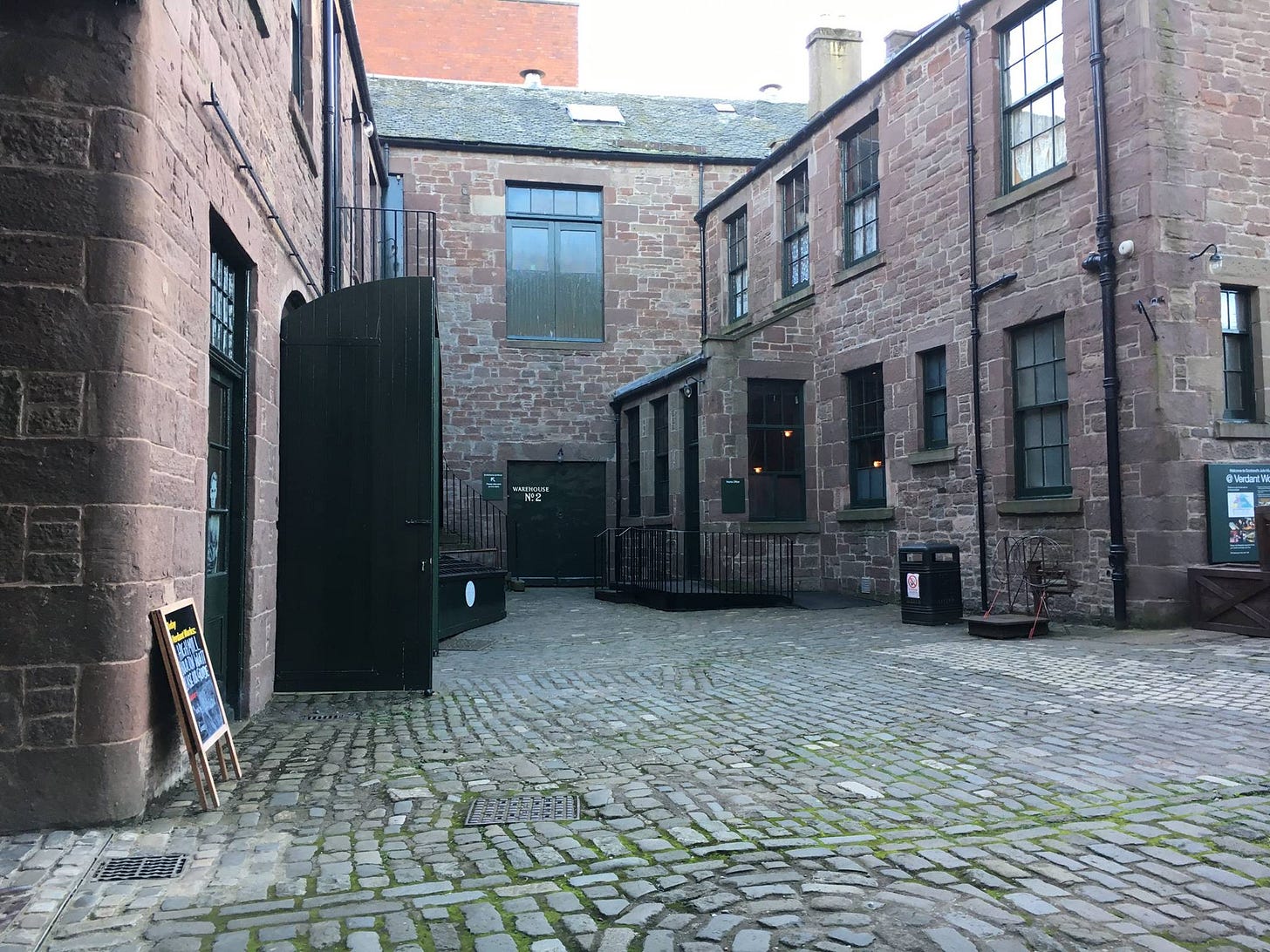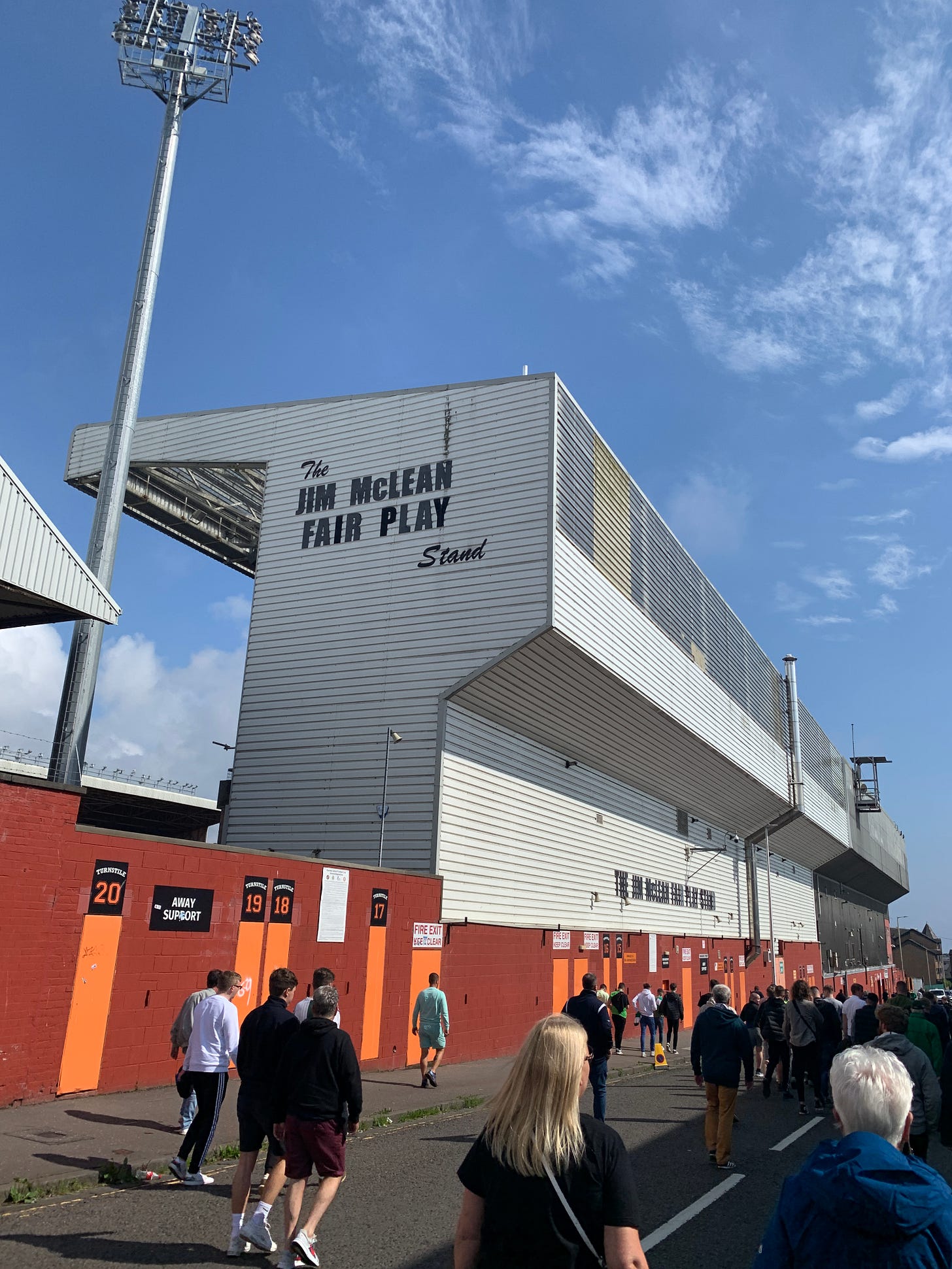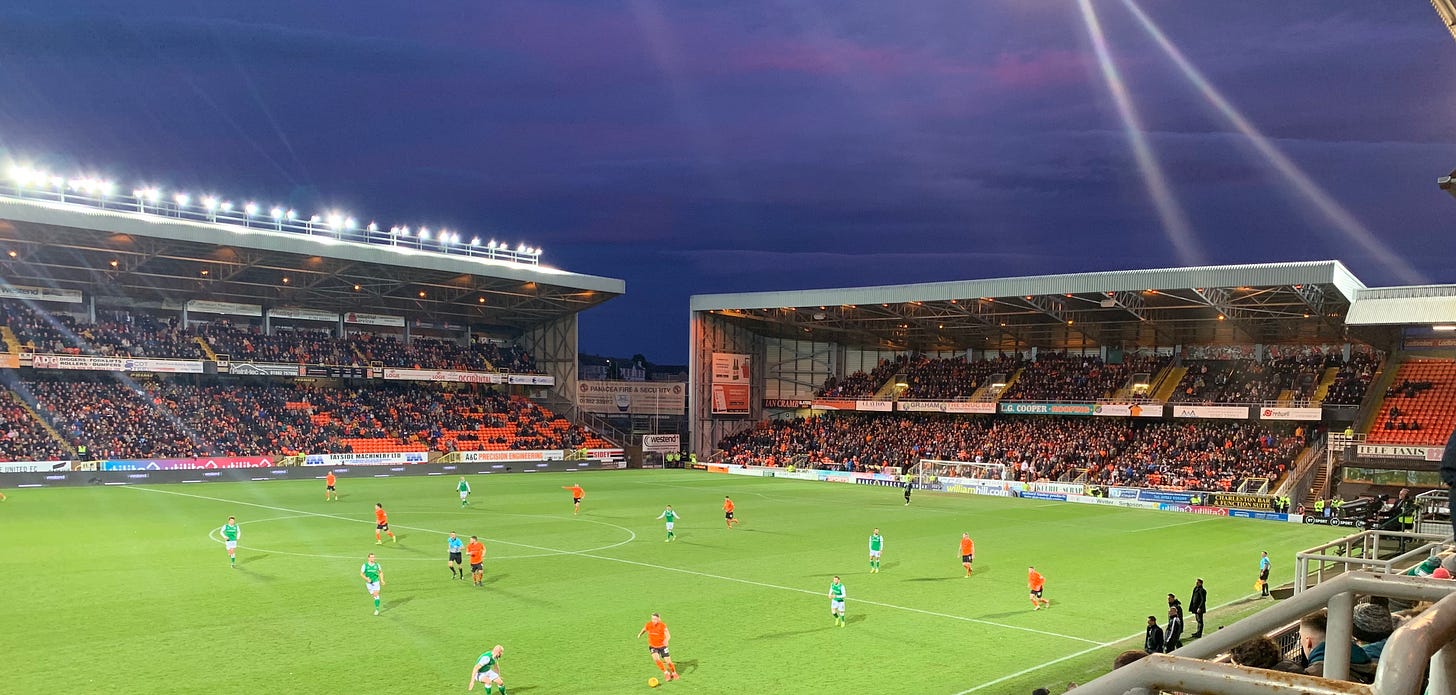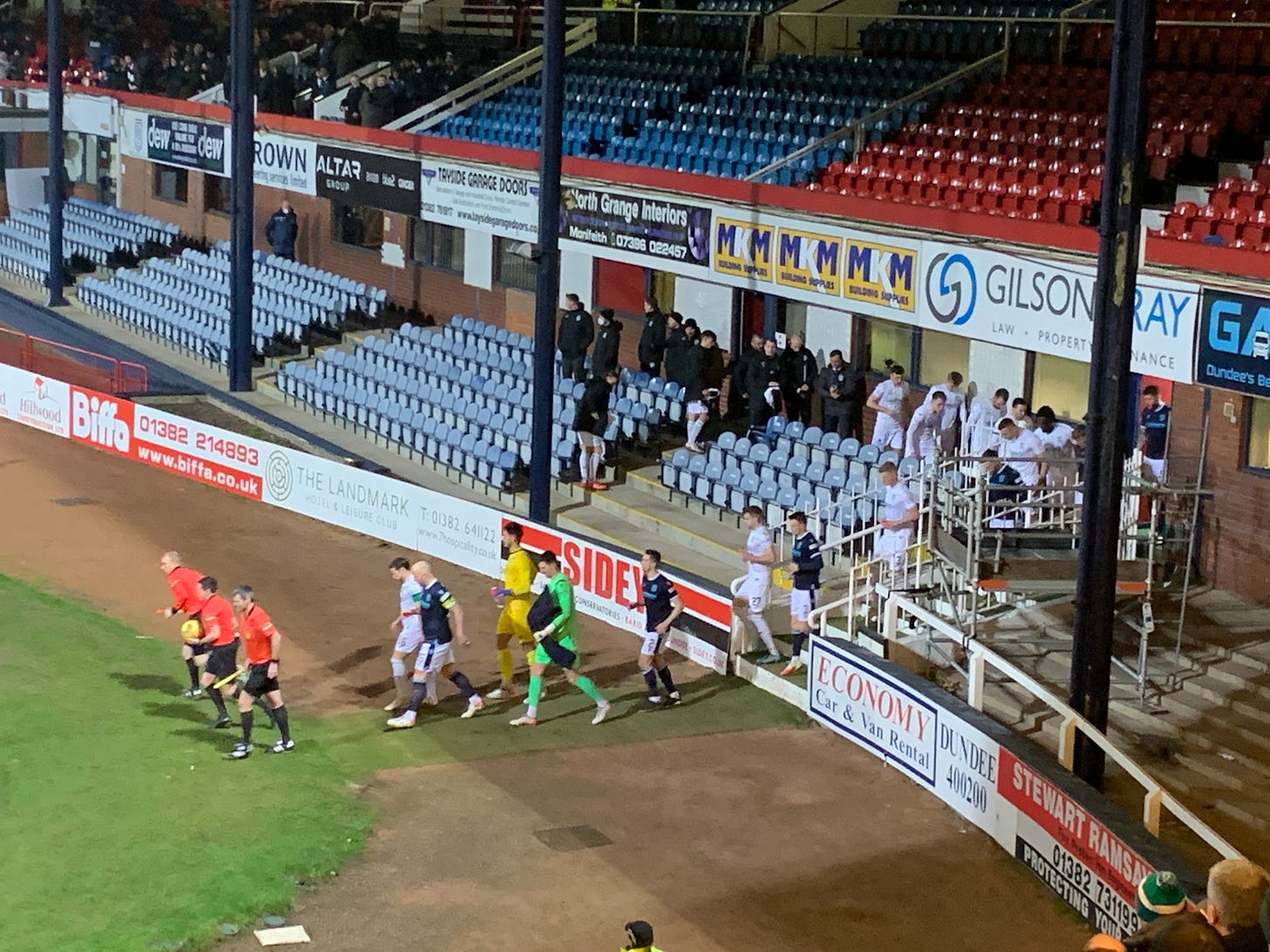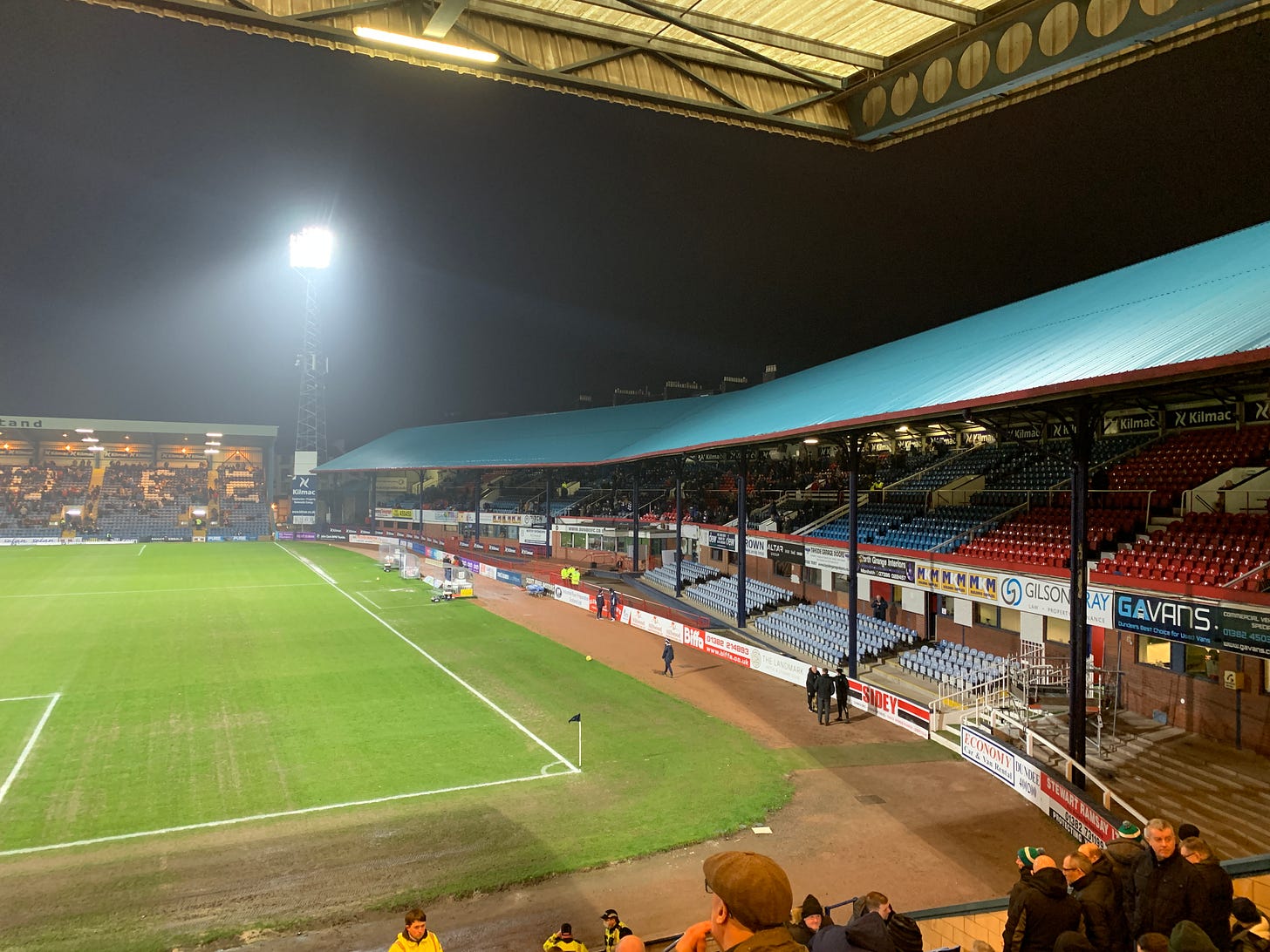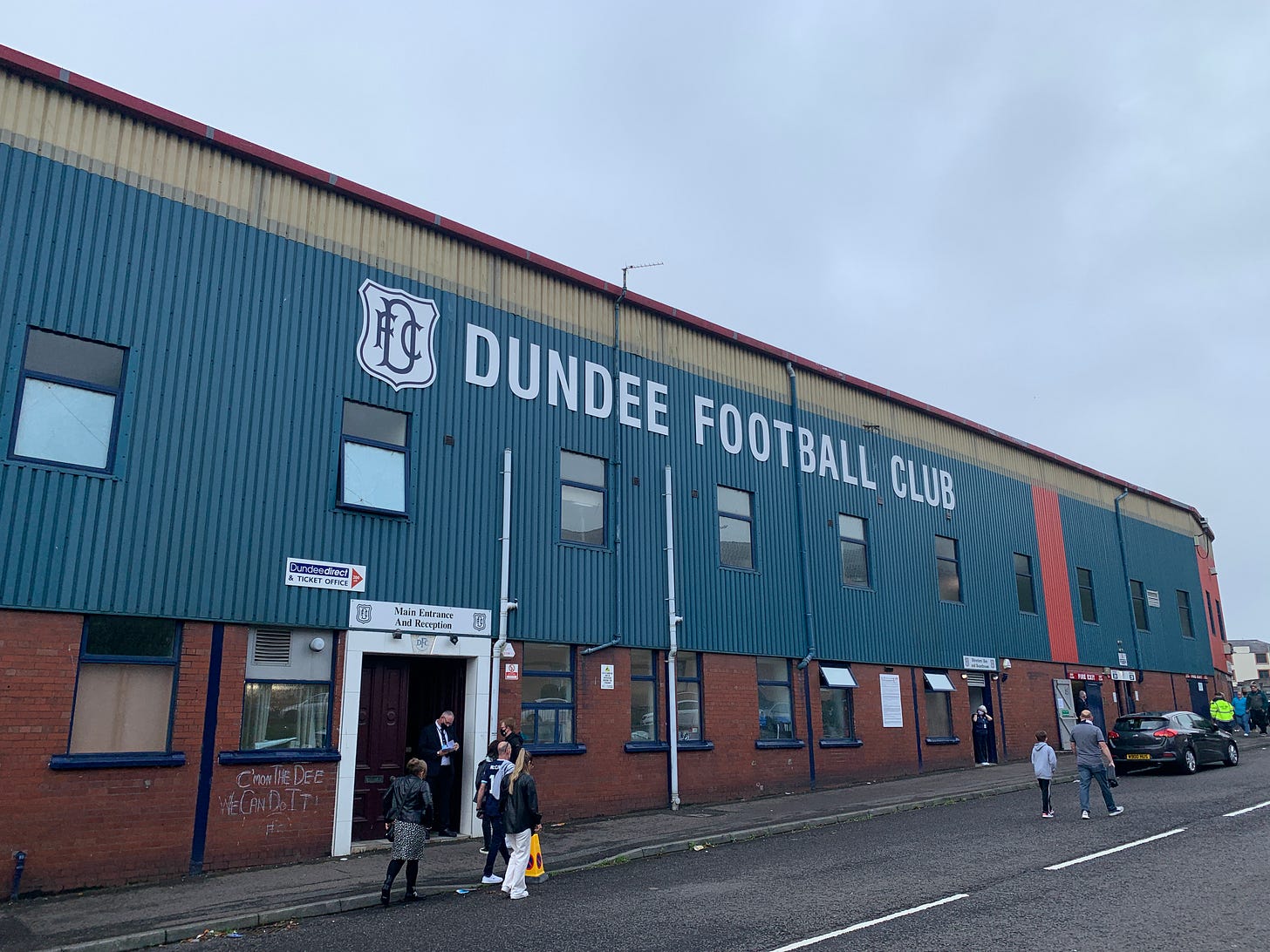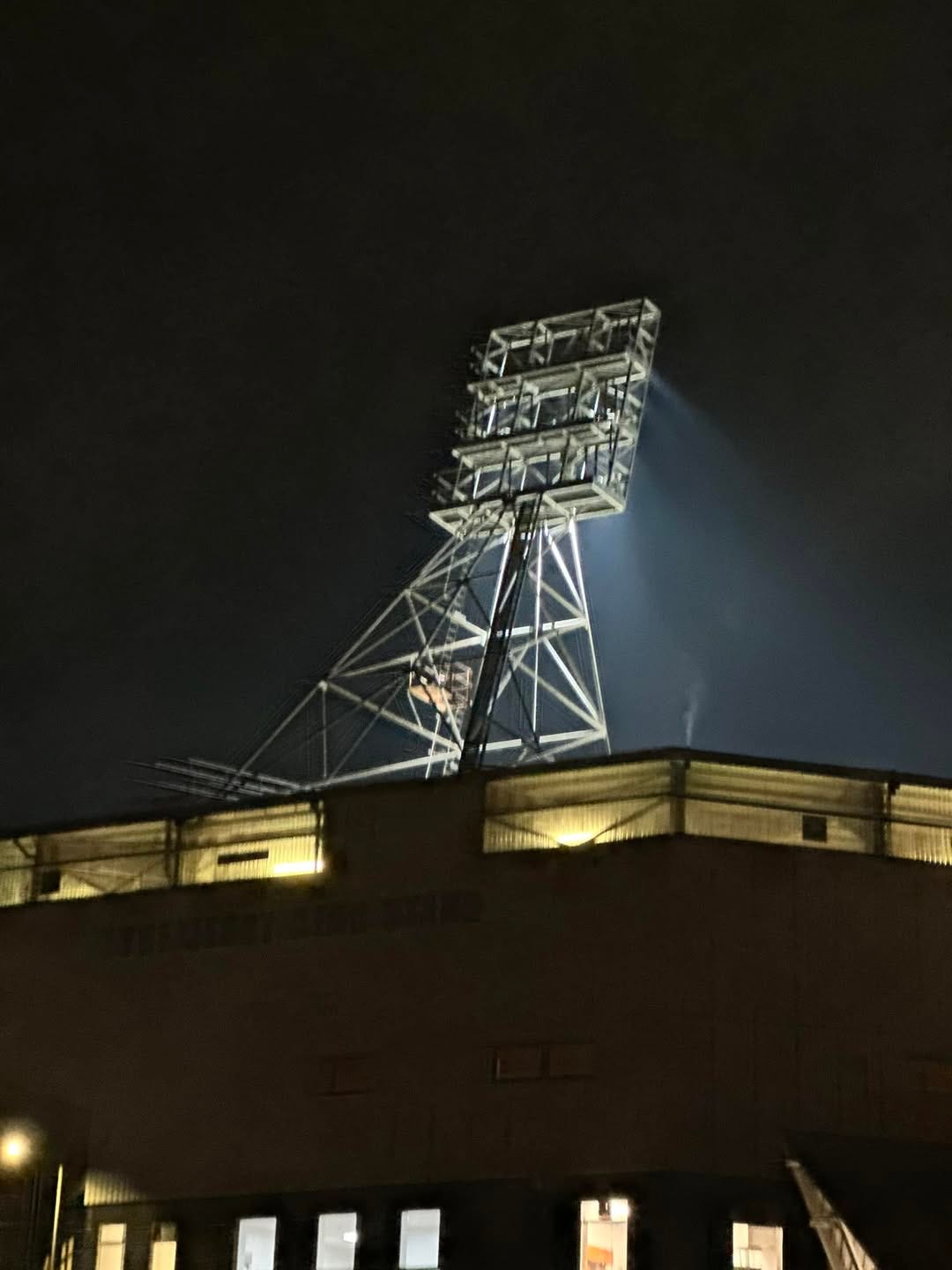I love going to Dundee. This is not a knee jerk reaction to Hibernian's recent win in the city, but a long lasting positivity towards the place.
I had friends from Dundee at university - good solid lads who, it seems to me, reflected their city and its values.
I love my birthplace, but Edinburgh has an awfy guid conceit of itself and some streets inhabited by unfounded pretentiousness. I always enjoy visiting Glasgow - it's a vibrant place, but its resolute and self conscious determination to be gallus can be wearing.
Dundee, though, always seems comfortable with itself, feeling no desperate need to project a marketable image. The phrase "City of Discovery", despite the historical link, seems to suggest we should visit and make up our own minds.
I love its position on a hillside overlooking a wide and impressive river, giving sloping streets and surprise views, and the way it is developing the riverside.
I like the way its bridge reflects the city's character - doing its job of crossing the river, and feeling no urge to be a World Heritage site or a brutalist, traffic halting scar on a city.
My uncle James, a Hibs footballer and then a Franciscan friar, spent most of his priestly life in the city, based at the Friary in Tullideph, serving the folk of Lochee and the Hilltown, much loved for his concern for the vulnerable and the sick, his humour and his sociability. He's buried nearby in Balgay cemetery which is in itself a satisfying reflection of the city - a sloping hillside with an eclectic collection of citizens. My father’s cousin, born with severe learning difficulties, spent his short life in the early twentieth century in the progressive care of the Baldovan Institution at Strathmartine Hospital, and is buried nearby
Politically, the city, with its working class trade union history, impressed me, when its voters were amongst the first to recognise that their natural yearning for radical, progressive, egalitarian values had an ever diminishing chance of being delivered under a UK Labour government, and voted for the "discovery" which becomes possible with independence and taking responsibility for our own governance.
In this connection, the city's fabulous Verdant Works houses the most impressive museum of social history I have ever visited. To visit is to experience the many strands of the city’s social history, the echo of a heavy industrial past ptresent in every corner of this former jute mill.
DC Thomson, while, editorially, not always to my political taste, for decades set the highest standards in journalism, not to mention giving us the Beano and the Dandy,
However, before this descends into a patronising “from the Capital” piece, I should home in on the most basic elements of my grá for the city. No matter how grand or famed a location may be, ultimately, it is the personal reaction which counts for most, and in my case, the attractions are at ground level, in more ways than one.
The city may well have been characterised at one time by “Jam, Jute ,and Journalism”, but, for me, it is more a case of “Friars, Football and Fritters”.
Dundee’s major football grounds and their quirky, if not entirely neighbourly, existence on the same street, have always fascinated me. Tannadice Park, with its mishmash of stands and labyrinthine corridors, despite its size, can generate a fine atmosphere, redolent of great European nights under Jim McLean. At my age, I’m grateful that the George Fox Stand was constructed in the early nineties, replacing the steepest and highest terracing steps in Scottish football; climbing them used to be a sair fecht and descending from the heights almost required an abseil!
Like all the best grounds, it contains a storied history, and the echoes of many famous nights can still be discerned about the place.
Two hundred yards up the road, we come to Dundee’s ground at Dens Park. There are opposition supporters who disdain this grand old stadium, but, in doing so, merely highlight its many attractions. The players enter the arena down a flight of steps from dressing rooms which, by rights, should be known as “the pavilion” as in days of yore. There is a wide running track between the pitch and what would have formerly been the standing enclosure. This enclosure is in front of the magnificent Leitch grandstand.
Archie Leitch was a Glasgow born engineer and the major stadium designer of his day. Between 1899 and 1939 he designed or contributed to most of the top twenty grounds in Scotland, England and Ireland, his grandstands lasting well into the seventies.
Modernisation, safety reports and relocation have inevitably claimed most of his masterpieces, but here at Dens, his original stand remains, designed to be satisfying to the eye as well as functional for the football club.
Most notable is the distinctive “crank” in the middle of the stand (and that is not a self reference!). It was not unusual in designs in the 1900s to have stands forming a shallow v-shape, the belief being that such a footprint meant that the customers in the extreme ends of the structure would have a better view of the whole pitch. In the case of Dens Park, this was exacerbated somewhat by the 30 degree angled junction between Tannadice St and Sandeman St, at the back of the stand, placing parameters on the stand’s design.
It is very easy in that stand to imagine the glory days at Dens – a league championship, European nights, and players like Gordon Smith, Alan Gilzean and Charlie Cooke
In an age when even the grandest stadia have a tendency to multifunctional similarity, the unique elements of both Dundee grounds make them feel special. And, like the city itself, the attraction is not in the spectacular but in the connection to the people who live around them. Nestled among steets of 1930 Council houses and traditional tenements, these football grounds, like the clubs they host, are at one with the people who live around them.
Much as I love those stadia, there is an equal pull on my affections each time I go to Dundee. It is situated on Clepington Rd, up the hill from both grounds, and it is called “Jamie’s Chippy”.
For various reasons, these are times when the neighbourhood chip shop is steadily disappearing, but Jamie’s remains a popular option for locals in this part of Dundee. Much as I like that, the major attraction for me at Jamie’s are the potato fritters.
Long ago, our school dinners offered an abomination known as spam fritters, redolent of post war austerity and unimaginative cuisine. These potato fritters, however, are at the opposite end of foodie treats, and I start to look forward to them from the moment the football fixtures are announced. Part of my delight comes from memories of the years I spent in the north of England as a teenager, where fritters were a common part of chip shop menus. I always found the combination of batter and potato mouth watering. When available north of the border, they tend to be “specials’, cooked to order, but at Jamie’s when you walk in to the shop they are ready and waiting for you!
Of course, I need nobody to tell me that fritters are not listed highly on the healthy foods agenda. Luckily, the football fates generally decree that three visits are the most I will make to Dundee in any season. Should it happen that both Dundee clubs and Hibs end up in the top six one year, that would be bad news for my cholesterol count!
I have happily banged away on social media about Jamie’s fritters for some years now, and I noticed on my last visit, possibly due to my marketing blitz, that “Fritters” are now proudly headlined in the shop window.
Such are the human likes and dislikes that form our connection to the world around us. Dundee has a number of top tourist attractions, but its people, their attitude, – and the fritters – are what count for me.
Not for nothing, I suspect, does my computer consistently autocorrect the name of the city by the Tay to “Fundee”






